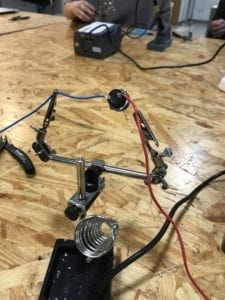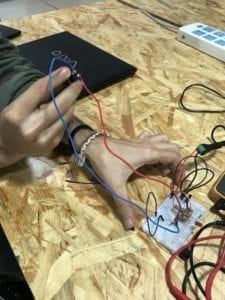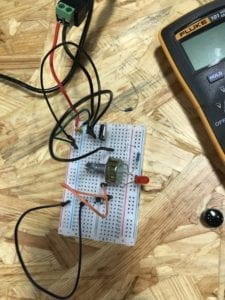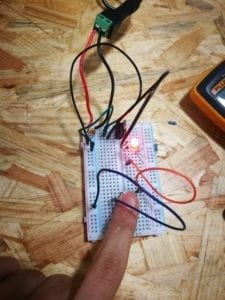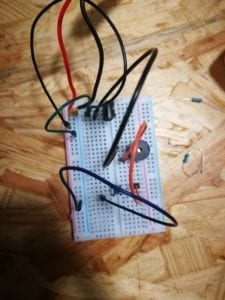The circuit building process was relatively easy and completing the circuits gave me a sense of satisfaction because they all worked on the first try. My first time soldering was also quite interesting. I had always been a software kind of person so being able to make something with my own hands was satisfying to me.
Regarding the components of the circuits and their purposes:
The 12V is the source of the power, which in this case was connected to the outlets. The variable resistor allows for the electricity to be adjusted, therefore allowing for the control of the brightness of the LED. The switch is a sensor that, when pressed, allows the LED to turn on. The LED is an actuator which converts electrical energy into light energy. The 220ohm resistor is used to control the flow of energy from the source so the LED doesn’t burst since the LED can only take 3V and the source provides 12V. The voltage regulator generates a fixed voltage output from the input of 12V. Capacitors store energy that passes through them until something lets it out. Something being the switch/button. In this case, the capacitor stores the leftover energy from the source and releases to ground. The speaker is an output device which produces sound when electricity enters it.
Question 1: I think the circuits I built with my partner include interactivity because it requires an action and reaction from two parties. The human who presses the button or rotates the variable resistor initiates the action, and the circuit reacts with the speaker and the LED light.
Question 2: Art is something an artist creates by bringing to life what is floating around in their heads. Art doesn’t have to be stationary. Therefore any interactive design that is the product of an artist’s vision can be considered art. This form of art can even be considered a completely different form: a form which allows interaction between the art and the viewer. It changes the interactivity from the art being the viewed and the person being the viewer to an active relationship between two “interactors.”
